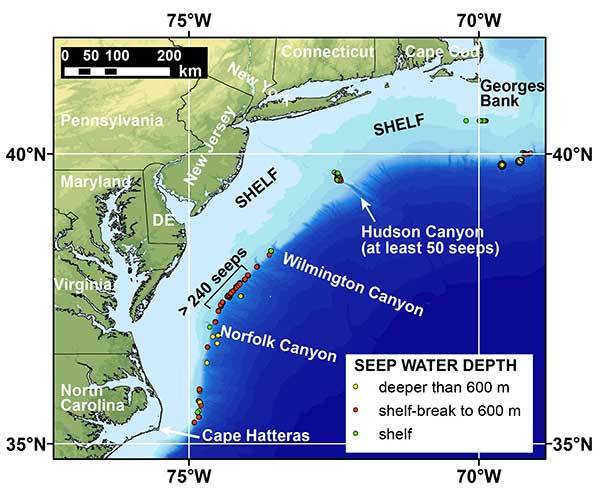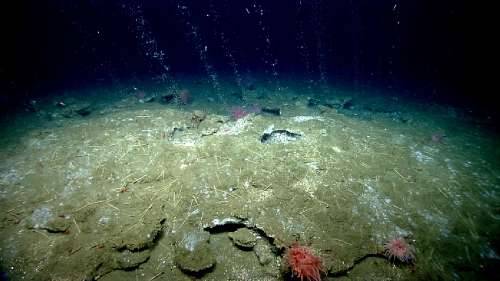Study Reveals US Atlantic Margin Methane Seep Expansion
A study conducted by Mississippi State University researchers, the U.S. Geological Survey and other institutions, reveals that the natural methane leakage from the U.S. Atlantic margin seafloor extends beyond prior knowledge gathered on the issue.
Methane plumes identified in the water column between Cape Hatteras, North Carolina and Georges Bank, Massachusetts, are emanating from at least 570 seafloor cold seeps on the outer continental shelf and the continental slope. Taken together, these areas, which lie between the coastline and the deep ocean, constitute the continental margin.
Prior to this study, only three seep areas had been identified beyond the edge of the continental shelf, which is located at approximately 590 feet water depth between Florida and Maine on the U.S. Atlantic seafloor.
“Widespread seepage had not been expected on the Atlantic margin. It is not near a plate tectonic boundary like the U.S. Pacific coast, nor associated with a petroleum basin like the northern Gulf of Mexico,” said Adam Skarke, the study’s lead author and Professor at Mississippi State University.
The gas being emitted by the seeps has not been sampled, but researchers believe that most of the leaking methane is produced by microbial processes in shallow sediments. This interpretation is primarily based on the location of the seeps and geological knowledge. Microbial methane is not found in deep-seated reservoirs and often tapped as a natural gas resource.
“Warming of ocean temperatures on seasonal, decadal or much longer time scales can cause gas hydrate to release its methane, which may then be emitted at seep sites,” said Carolyn Ruppel, the study’s co-author and chief of the USGS Gas Hydrates Project.
“Such continental slope seeps have previously been recognized in the Arctic, but not at mid-latitudes. So this is a first.”
Most seeps described in the new study are too deep for the methane to directly reach the atmosphere, but the methane that remains in the water column can be oxidized to carbon dioxide. This in turn increases the acidity of ocean waters and reduces oxygen levels.
Shallow-water seeps that may be related to offshore groundwater discharge were detected at the edge of the shelf and in the upper part of Hudson Canyon, an undersea gorge that represents the offshore extension of the Hudson River.
Methane from these seeps could directly reach the atmosphere, contributing to increased concentrations of this potent greenhouse gas. More extensive shallow-water surveys than described in this study will be required to document the extent of such seeps.
"This study continues the tradition of advancing U.S. marine science research through partnerships between federal agencies and the involvement of academic researchers,” said John Haines, coordinator of the USGS Coastal and Marine Geology Program.
“NOAA's Ocean Exploration program acquired state-of-the-art data at the scale of the entire margin, while academic and USGS scientists teamed to interpret these data in the context of a research problem of global significance."







